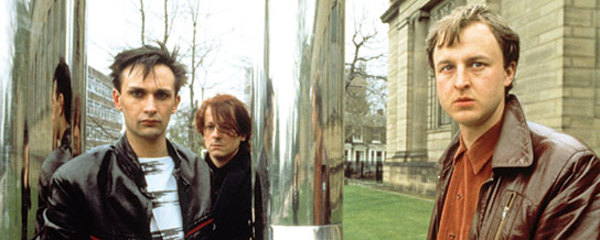Sheffield Calling
We all have magical moments when our existence was enriched by the power of music. […]
Sheffield Calling
We all have magical moments when our existence was enriched by the power of music. […]

We all have magical moments when our existence was enriched by the power of music. For me, like many other British teenagers, such memories include years of following bands like The Smiths and New Order before stumbling upon the strange new sound of dance music. The backdrop to this personal discovery was the South Yorkshire city of Sheffield, a city that has largely been skipped over in the written history of music in favor of passing references to “bleep” techno and Warp Records. Crucial as that sound and label are to the story of Sheffield, the city’s legacy also includes pioneering electronic disco acts and the scene that spawned them.
At the end of the ‘80s, Sheffield was a city still coming to terms with the decline of its native steel industry. Much has been made of this industrial setting as a way of explaining its unique take on US techno–it’s easy to make comparisons between the disused car plants of Detroit and the dilapidated mills of the Steel City.
While such an environment may have helped shape a generation of young music heads hungry for something novel, it was the new wave of Sheffield acts in the ‘80s–including Chakk, Human League, and Cabaret Voltaire–that shaped the local agenda. Like many northern cities of the time, this was a place in love with American electro, funk, soul, hip-hop, and house, but with the added determination to give such sounds a homegrown electronic twist.
Key to aggravating such desires and central to the local scene were two unsung heroes: DJs Winston and Parrot. Together they were champions of black music; you could find them in small strobe-lit rooms like the one at Club Superman or in the unlikely setting of the City Hall ballroom, where jazz dancers would come from miles around to show off their skills to the techno of Model 500 whilst soul boys danced to electro classics like Hashim’s “Al-Naafiysh.” It felt completely raw and exciting, as if we were part of a vital movement.
Sensing this, Rob Mitchell and Steve Beckett opened up the Warp Records shop. Soon they released the first single on their own label: The Forgemasters’ “Track With No Name” featuring Winston Hazel on production. Groundbreaking records quickly followed from Nightmares On Wax (still in techno mode), Sweet Exorcist (Parrot and ex-CV Richard Kirk), and Bradford’s Unique 3 (a blistering fusion of dub and house). By the time LFO’s monumental debut came out, Warp had had several chart hits and Sheffield was known as the home of “bleep” techno.
Things were changing fast, though. The Sheffield sound had helped spark the development of hardcore, a sound many felt lacked soul. The whole youth population of the country was “getting on one” and the UK was hell-bent on refining the American house sound to a state fit for loved-up ears. By the start of the 1990s, dance music was still thrilling–with the added fun of bands like Manchester’s Happy Mondays and Stone Roses thrown in–but Sheffield’s local identity was being eroded by new sounds from London, Italy, and New York. The ghost of Sheffield circa 1987-91 can still be sensed at nights like Scuba and you can still catch Winston playing to a whole new generation at nights like Electric Chair. Warp has gone on to become the quintessential independent label, and Sheffield itself has been regenerated, ready to confirm an important new place on the musical map. But hundreds of local lads and lassies, and a few students like myself, will always remember Sheffield as it was for a brief, beautiful moment in time: the pulsing, bloody heart of the acid house revolution.

